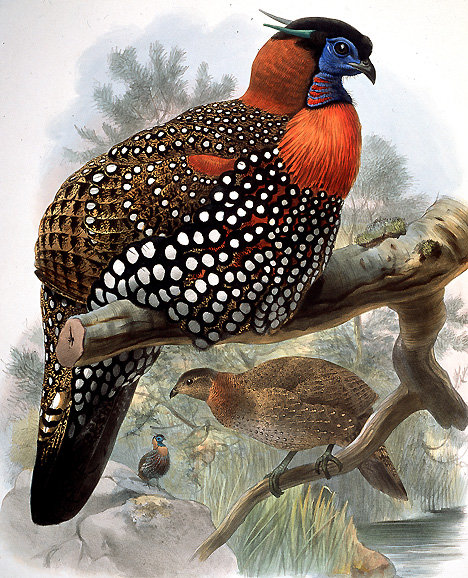 Western Tragopan
Western TragopanTragopan melanocephalus (J.E. Gray)
 Western Tragopan
Western TragopanDistributed throughout the Western Himalayas, between 8,000 and 12,000 feet, from extreme northern Pakistan to northwest India and southwest Tibet (Sibley 1990).
This pheasant is also known as the Black-headed Tragopan or Horned Tragopan. The Western Tragopan was first imported into Europe between 1864 and 1882 by W. Jamrach, an English animal dealer (Delacour 1951). The British who visited the Himalayas regarded this pheasant as a game bird, consequently, it is likely that sportsmen or biological collecting houses that were popular in Britain during the nineteenth century first introduced the Western Tragopan to fly tiers.
The flank feathers were used in highly ornamental salmon flies. For example, Frederick Tolfrey in Jones's Guide to Norway (1848) refers to the Western Tragopan in General Salmon Fly #15, the Mortell, when he describes the wing as containing 'Two feathers from the breast of the Toucan, two from the black-headed pheasant's breast, and two golden toppings.' Later, Major John P. Traherne, a nineteenth century salmon fly designer and tier, created the Black Argus in the 1880's, with the wings composed of three pairs of breast feathers from the Western Tragopan, back to back (Kelson 1887).
If you want to know more about the Western Tragopan pheasant and other birds related to our fly tying heritage, we suggest you order Rare and Unusual Fly Tying Materials: A Natural History.